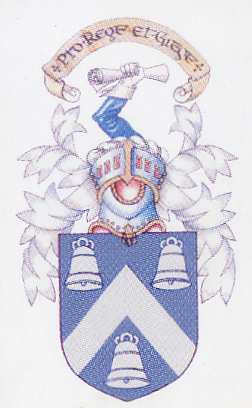
The Madras College Archive

|
|
The Madras College Archive |
|
|
Former Pupil Biographies
Dr Dame Honor Briget Fell (1900 - 1986)
Honor attended Wychwood School, Oxford, which was distinguished due to its emphasis of teaching science, especially biology. School records note that Fell kept ferrets in the school gardens. Also, a family journal published quarterly, relays an incident where at 13, Fell brought her favourite ferret Janie to her sister's wedding. These early antics demonstrate both Fell's love for nature and an adventurous spirit which permeated all aspects of her life. At age 16, Fell went to Madras College, St.Andrews,
and then to Edinburgh University at 18 to read Zoology. She was awarded a
B.Sc.in 1923, a Ph.D. in 1924, and a D.Sc .in 1932. While at Edinburgh,
Fell worked with Frank Crew, Professor of Animal Genetics. Crew studied
the developmental processes of the ovaries and testes of fowls by
microscopic examination of sections of tissue. Impressed by his bright
student, Crew sent Fell to Cambridge where Dr. T.S.P. Strangeways was
developing the new art of tissue culture. There, she was greatly impressed
by witnessing, for the first time, a living cell undergoing mitotic
division in tissue culture. Before the end of her visit, Strangeways told
Fell if there was no future for her in Edinburgh that she was always
welcome to return. No opening was made for her in Edinburgh, and in 1923,
she returned to Cambridge as Dr. Strangeways’ scientific assistant with a
grant from the Medical Research Council. Fell remained in Cambridge for
the rest of her career, ultimately serving as the director of Strangeways
Research Laboratory.
On the other hand, Fell also recognized the limitations of this technique.
"[Tissue culture, she writes] can tell us nothing about the physiology of
an animal's circulatory or excretory systems; nothing about the physiology
of its brain or sense organs; nothing about the complex interactions of
the endocrine glands; nothing about the functioning of the lungs or
alimentary canal." In fact,"when we consider the staggering complexity of
cells' normal environment in the body, I think it is very surprising that
they can be cultivated in vitro at all, and that they survive the ruthless
treatment they receive at the hands of the cell culturist." In fact, else
where she chides non-biologists for their failure recognize the challenge
that a biologist faces in her work. She states: Physicists and chemists
sometimes despise biology as being an exact science, but in fact it is not
biology that is inexact but the biologist, and not for this the poor man
can hardly be blamed because he is faced with an almost impossible task.
Only think of the appalling complexity of his material! The most intricate
computer, the most elaborate engine ever devised by man are simple, clumsy
contraption compared to an amoeba or a blow-fly, let alone a human being.
"The mechanism where by embryonic cells continue to organize themselves
into that complex society that we call a tissue is a fascinating problem.
As often happens in biological research, such information as we have
serves only to shift the mystery to another level.
Nontheless Fell's career was marked by her willinginess to persue seemingly unprofitable paths and encouraged her colleges to do the same. Referring to her work on the action of papin and Vitamin A on cartilage of limb bone rudiments with Thomas, Honor writes in 1981:
Fell's dedication and boundless enthusiasm can be explained in a single phrase: she loved her work. Thus, she says:
Similarly, three and a half weeks before she died, still working at the bench, she called out "It's worked, isn't it exciting, come and see the results!" Fell's motivation came from two sources:
These qualities supported her career dedicated to exploring uncharted territory. I think Robin Poole eloquently summarizes her person, when he writes:
|
||